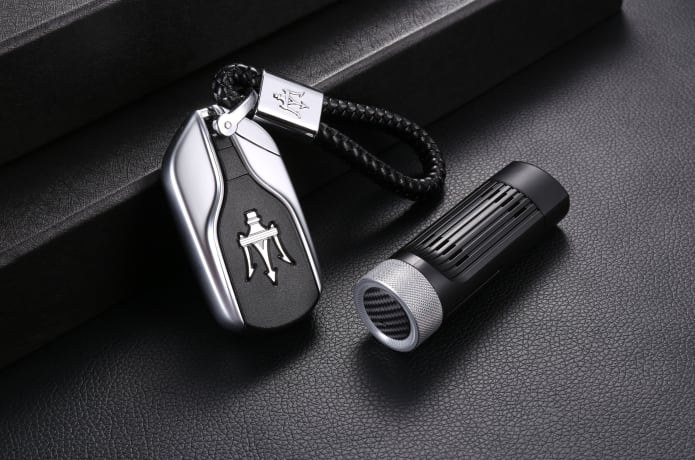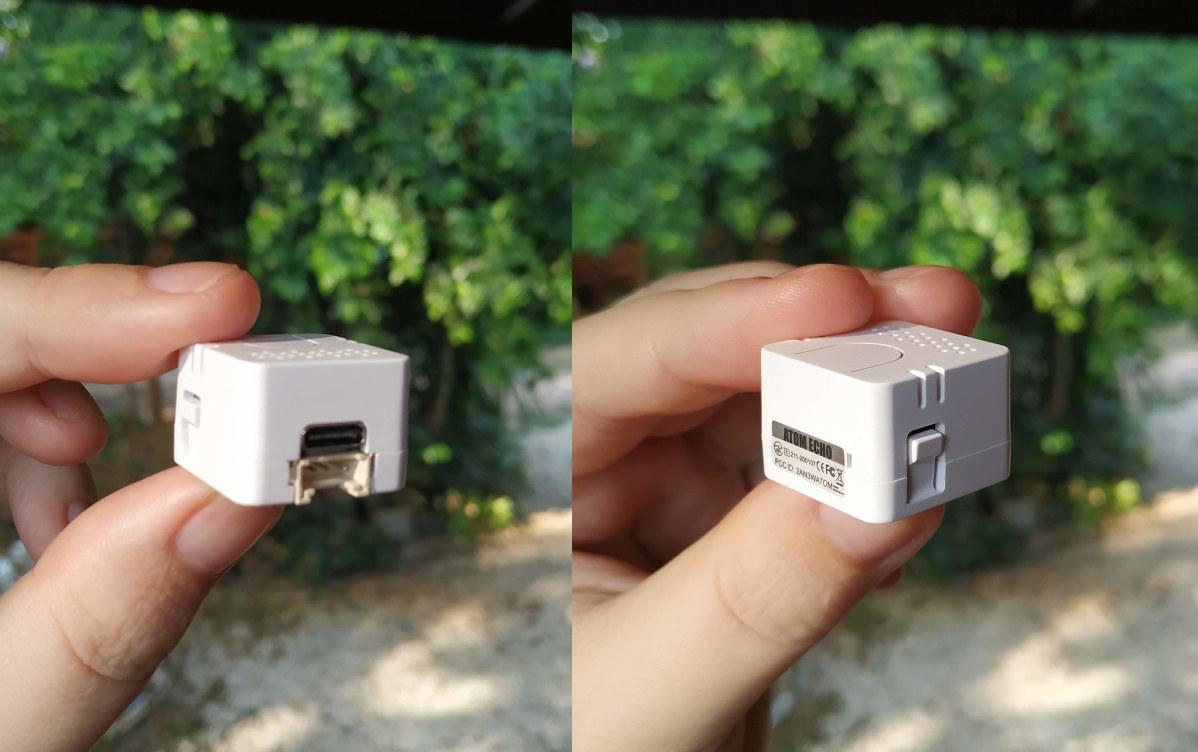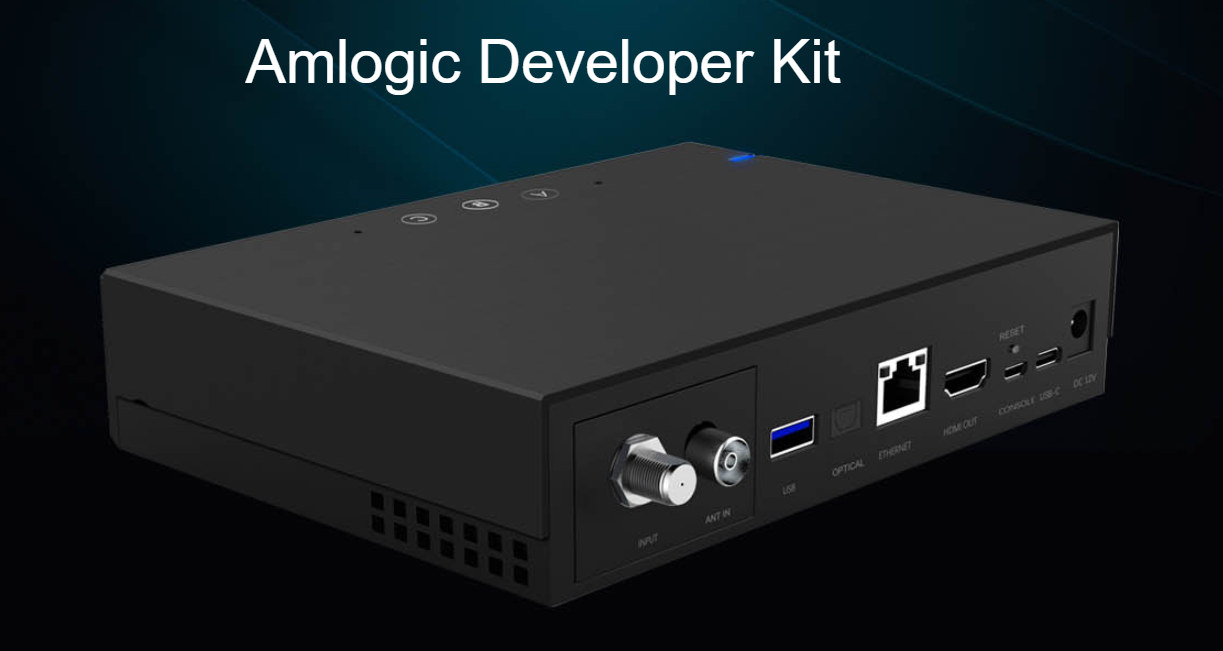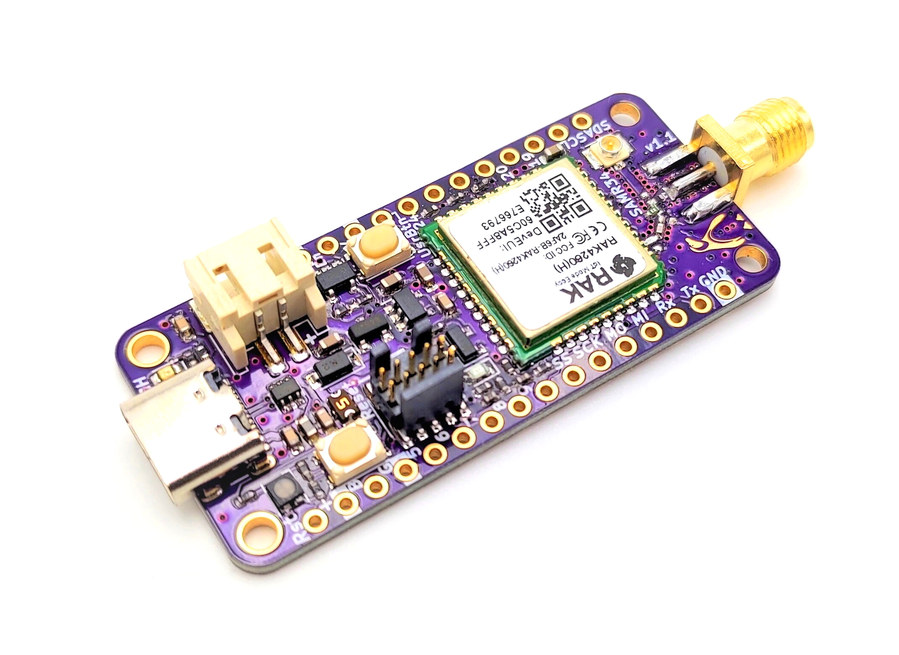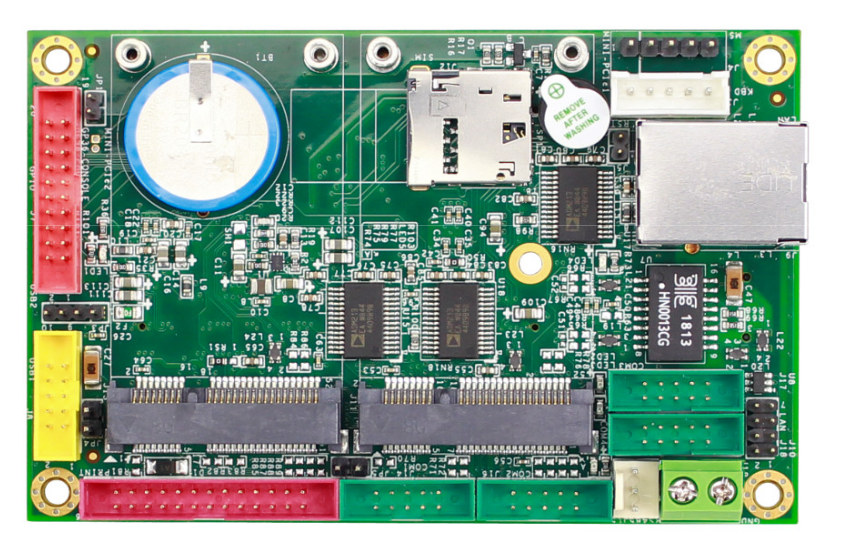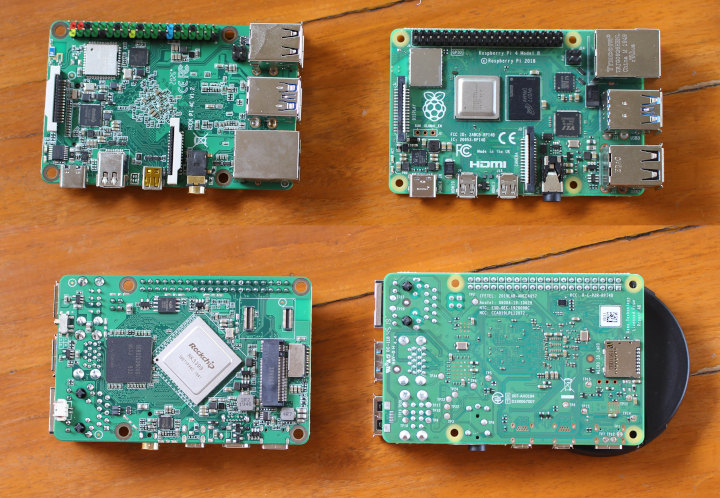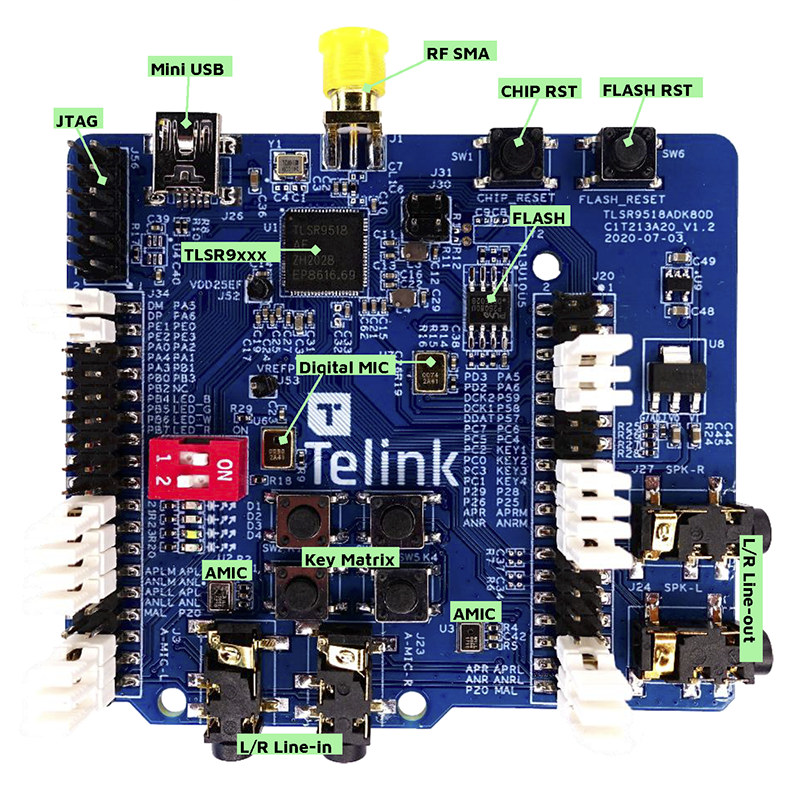[Update Feb 16, 2021: CarDongle used to be called CarDroid, but the company had to change the product name. The rest of the post still uses CarDroid] Many cars now sell with Android Auto support but infotainment systems compatible with Google’s mobile app may have limitations and that’s why we have started to see third-party solutions such as AAWireless adapter to enable wireless Android Auto on more cars. Since Android Auto compatible hardware can’t be easily or cheaply upgraded, CarDroid Innovations has introduced CarDroid USB computer that works with Android Auto but instead runs Android 9.0 on a quad or octa-core Cortex-A53 processor clocked at up to 2.0 GHz with improved performance and access to more apps. CarDroid specifications: SoC – Unnamed quad or octa-core Cortex-A53 processor @ 2.0 GHz (Likely Amlogic S912 octa-core processor, advertised at 2.0 GHz, but whose real max frequency is 1.5 GHz, and maybe Amlogic […]
Kontron unveils RK3399K(Pro) SMARC 2.1 Module with up to 8GB RAM
Embedded systems companies tend to use processors from established firms like NXP Semiconductors or Texas Instruments, we’ve seen few systems-on-module based on processors from Amlogic, Rockchip, or Allwinner which are popular on this blog due to their value proposition. One of the reasons was/is software support, but this has improved over the years, and the other is the lack of wide temperature range parts plus potential concerns about long term supplies. I’m not aware of any industrial/extended temperature range part from Amlogic, but Allwinner provides A40i/A60i industrial temperature range processors, and Rockchip RK3399K supports an extended commercial temperature range between -20 to +85°C. Kontron selected the latter for their first-ever Rockchip powered system-on-module: the SMARC-fA3399 SMARC 2.1 module. SMARC-fA3399 SoM specifications: SoC – Rockchip RK3399K hexa-core processor with two Cortex A72 cores @ 1.8/2.0 GHz (wide temp vs commercial temp), four Cortex-A53 cores @ 1.4/1.6 GHz, Arm Mali-T860MP4 GPU System […]
Giveaway Week – M5Stack Atom Echo ESP32 Speaker
I reviewed M5Stack Atom Echo Bluetooth speaker powered by ESP32 earlier this year, and that will be the fifth prize of Giveaway Week 2020. It’s very much like a (low-quality) Bluetooth speaker, but you can program it with the Arduino IDE to do whatever you want. There’s also a Grove connector and I/O headers to control external modules. There’s no battery, so a USB-C cable is needed for power. To enter the draw simply leave a comment with your country and whatever else you’d like to say. If the country is missing, I’ll consider the entry void. Other rules are as follows: Only one entry per contest. I will filter out entries with the same IP and/or email address. Contests are open for 48 hours starting at 11 am (Bangkok time) every day. Comments will be closed after 48 hours. If comments are open, the contest is still going on. […]
Amlogic S905X4 Android TV & RDK developer kit ships with ATSC, DVB, or ISDB tuners
SEI Robotics has launched an Amlogic S905X4 developer kit for Android TV & RDK development under their DroidLogic brand. The devkit looks like a standard TV box, and the company also provides a choice of tuners with DVB-S2, DVB-T2/C, DVB-S2+DVB-T2/C Combo, ISTB-T, or ATSC-T. We were expecting Amlogic S905X4 TV boxes with products like Ugoos X4 or Mecool KM6 by the end of last month, but due to supply issues manufacturing has been delayed. So SEI Robotics could be a good device to get started with your own project as soon as possible, for example, to work on AV1 hardware decoding implementation. DroidLogic Amlogic S905X4 developer kit specifications: SoC – Amlogic S905X4 quad-core Cortex-A55 processor with Arm Mali-G31MP2 GPU (Amlogic S905X3 as option) System Memory – 2GB DDR4 Storage – 8GB eMMC flash Video Output – HDMI 2.1 up to 4Kp60 with CEC, HDR, and HDCP 2.2 support; CVBS (composite […]
Penguino Feather 4260 LoRa development board features RAK4260 module
Adafruit Feather form factor has become more popular in recent years with third-parties introducing Feather compatible boards such as the Giant Board (Linux capable), OrangeCrab (FPGA), or FeatherS2 (ESP32 WiFi + Bluetooth), and as well as FeatherWing add-on boards. Azerbaijan based MakerTronika Labs has launched their own Feather compatible board with LoRa connectivity: Penguino Feather 4260. The development board is powered by a RAK4260 module based on SAMR34 LoRa SiP and supports both 868 and 915 MHz bands. Penguino Feather 4260 specifications: LoRa module – Rak wireless RAK4260 module with: SiP – Microchip ATSAMR34J18 SiP with SAML21 Arm Cortex M0+ MCU @ 48 MHz, 40 KB RAM, 256 KB Flash, Semtech SX1276 LoRa Connectivity Frequency Range – 862 to 1020 MHz High level of accuracy and stability (32MHz TXCO) Max Tx Power: 20dBm; Max Sensitivity: -148dBm; Rx Current: 17mA (typical) Compliant with LoRaWan 1.0.2 Power Consumption Low RX current of […]
ICOP VEX2-6415 SBC runs DOS, QNX, Linux, Windows on Vortex86EX2 “Dual OS” x86 processor
DM&P Vortex86EX2 is a dual-core x86 processor that supports legacy ISA and PCI interfaces, and designed in a way that makes it capable of running two OS independently, easy with its own BIOS, without the need for virtualization, nor a hypervisor. At the time, we also covered the Vortex86EX2 evaluation board from the company, but the first commercial product that has come to my attention is ICOP VEX2-6415 Vortex86EX2 SBC designed for automation and IoT, and which the company says support “Windows Embedded Compact 7, Windows Embedded Compact 6, various of (sic) Linux distribution, QNX, and even the legacy but still popular DOS”. ICOP VEX2-6415 SBC specifications: CPU – DM&P Vortex86EX2 dual-core processor with Master core @ 600MHz max with build-in FPU L1/L2 Cache for user interface Slave core @ 400MHz max with build-in FPU, L1 Cache for real-time control System Memory – 512MB/1GB DDR3 Storage – 4GB eMMC flash […]
Giveaway Week – RockPi 4C SBC
The first, but not last, SBC of Giveaway Week 2020 is RockPi 4C single board computer equipped with a Rockchip RK3399 processor coupled with 4GB RAM, and featuring HDMI and DisplayPort for dual 4K monitor setups, as well as Gigabit Ethernet, WiFI 5, Bluetooth, USB 3.0/2.0 ports, etc… The board closely follows Raspberry Pi 4 form factor, so without thinking too much about it I thought I could just use it with CrowPi2 Raspberry Pi 4 laptop. However due to small mechanical differences, and a different position of the processor impacting cooling, I quickly realized this would not work. Since I did not have time to review yet another RK3399 SBC, I thought I might as well as give it away, as I’m sure somebody will find a good use for it. Note the board does not come with any accessories, so you’ll have to get a MicroSD card, USB-C […]
Telink TLSR9 Wireless Audio & IoT RISC-V SoC integrates RISC-V DSP/SIMD P-extension
At the end of last month, there was a lot of buzz about Bouffalo BL602, one of the first RISC-V SoC with built-in wireless connectivity, namely WiFi 4 and Bluetooth 5.0 LE. We should expect more and more of those types of solutions, and Telink & Andes jointly introduced TLSR9-series of wireless audio chips for hearables, wearables, and other high-performance IoT applications. The chips are powered by an Andes D25F RISC-V 5-stage core that happens to be the first core to integrate RISC-V DSP/SIMD P-extension and offer Bluetooth 5.2, Zigbee 3.0, HomeKit, 6LoWPAN, Thread, and/or 2.4 GHz proprietary protocol. The press release focuses on the Andes core, but an article in Chinese allows use to find more about Telink TLSR9 family’s key features: CPU – Andes D25F 32-bit RISC-V 5-stage core @ up to 96 MHz (2.59 DMIPS/MHz and 3.54 CoreMark/MHz) with RISC-V DSP/SIMD P-extension Optional NNU – AI engine […]


